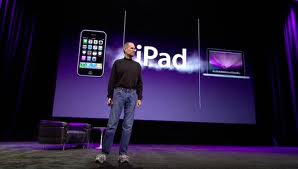Is a legal pad an item of personal hygiene for female lawyers? How about a launch pad – is that a contraption for applying Maxipads? What about ink pad? Or mouse pad…
Pardon the puerile analogies. Of course you know what these kind of ‘pads’ are. So, to force such interpretation of their meaning through association with a feminine hygiene pad would be perverse. But that’s no worse than what happened this week with Apple’s iPad.
Within seconds of the unveiling of the iPad by Steve Jobs, Twitter lit up with women complaining and/or joking that the name immediately made them think of …iTampon.
Experts who should know better fanned the flames. “It’s an unfortunate name choice,” contended Michael Silverstein, senior vice president at Boston Consulting Group and author of “Women Want More: How to Capture Your Share of the World’s Largest, Fastest-Growing Market.”
“They needed to do a research protocol and testing for a product that would offend no one while making clear its technical, functional and emotional benefits,” he said in the Pittsburgh Post-Gazette.

That may be the way they think in the literal world of management consulting. What he clearly does not understand is that, when it comes to names and naming, experiential context is everything. Just is we do not suppose a cell phone is for making calls in jail, that Virgin Atlantic is an airline for the sexually inexperienced, or indeed Apple is a company that manages orchards, the iPad will create its own context and it will be become just as familiar and accepted as iPod.
The trap to guard against with new names is the natural tendency of people to associate an unfamiliar name with something that it is familiar. The statement that begins, “It reminds me of…” has led to the premature dismissal of many a good name candidate. Associations are important, but focus should be on whether the the product or company that is being named could create new, positive meaning around the word, rather than rear-view association.
There’s nothing that can be done with plain bad names, such as the Ford Probe. But just imagine if iPad had been called the iTablet, which some bets were on before the launch. Would alarmed physicians be advising us not to use one more than a twice day, and then only after meals with a glass of water? Of course not. They know what hypochondriasis is.




